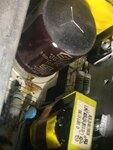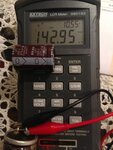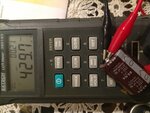PrescottDan
Banned
Multiple capacitors with the same capacitance value and same voltage rate are in parallel but only one gets damaged and it's the same capacitor every time
Since all the capacitors have the same capacitance and same voltage rate , why would only one get damaged? and the same one?
They are in parallel using a bare wire
It's seems like one of the capacitors gets hit with in rush current or pulse spike first before the other ones, but how so when they all are in parallel
When you put multiple capacitors in parallel the ESR is lower?
Since the ESR is very low the In rush current or spike can damage the capacitors easier?
Does the Bare wire case delay to each capacitor in parallel?
- - - Updated - - -
Since all the capacitors aren't MATCHED , would this cause one capacitor out of the others to be HIT first with the in rush current or voltage spike before the others?
Or what is causes one of the capacitors to be HIT first by the in current current or voltage spike before the others?
Since all the capacitors have the same capacitance and same voltage rate , why would only one get damaged? and the same one?
They are in parallel using a bare wire
It's seems like one of the capacitors gets hit with in rush current or pulse spike first before the other ones, but how so when they all are in parallel
When you put multiple capacitors in parallel the ESR is lower?
Since the ESR is very low the In rush current or spike can damage the capacitors easier?
Does the Bare wire case delay to each capacitor in parallel?
- - - Updated - - -
Since all the capacitors aren't MATCHED , would this cause one capacitor out of the others to be HIT first with the in rush current or voltage spike before the others?
Or what is causes one of the capacitors to be HIT first by the in current current or voltage spike before the others?


